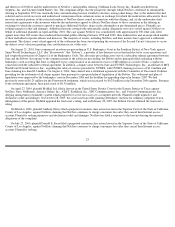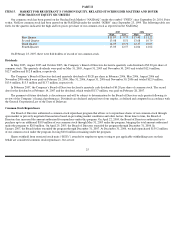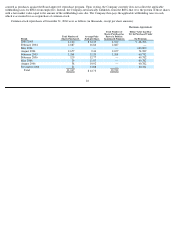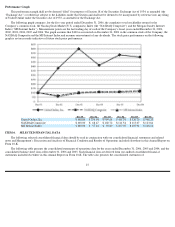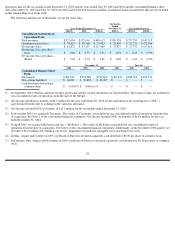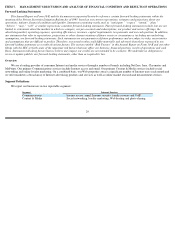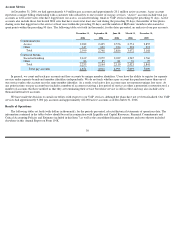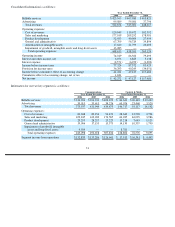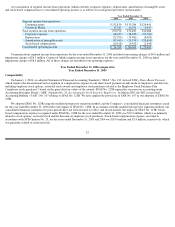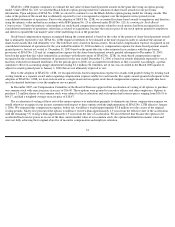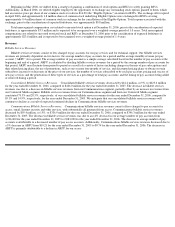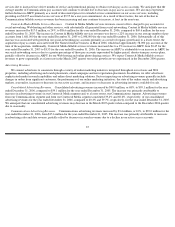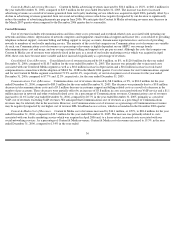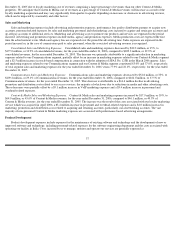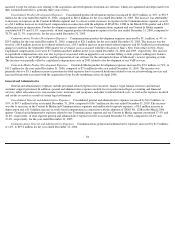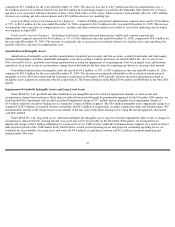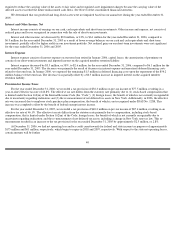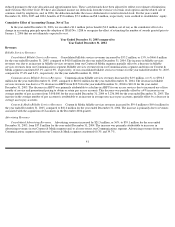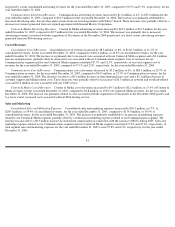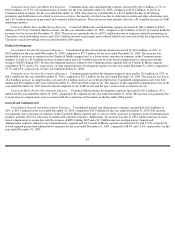Classmates.com 2006 Annual Report Download - page 34
Download and view the complete annual report
Please find page 34 of the 2006 Classmates.com annual report below. You can navigate through the pages in the report by either clicking on the pages listed below, or by using the keyword search tool below to find specific information within the annual report.
SFAS No. 123R requires companies to estimate the fair value of share-based payment awards on the grant date using an option-pricing
model. Under SFAS No. 123, we used the Black-Scholes option-pricing model for valuation of share-based awards for our pro forma
information. Upon adoption of SFAS No. 123R, we elected to continue to use the Black-Scholes option-pricing model for valuing awards. The
value of the portion of the award that is ultimately expected to vest is recognized as expense over the requisite service periods in our
consolidated statements of operations. Prior to the adoption of SFAS No. 123R, we accounted for share-
based awards to employees and directors
using the intrinsic value method in accordance with APB Opinion No. 25 as allowed under SFAS No. 123, Accounting for Stock-Based
Compensation . Under the intrinsic value method, no stock-based compensation expense related to stock options had been recognized in our
consolidated statements of operations, other than as related to acquisitions, because the exercise price of our stock options granted to employees
and directors equaled the fair market value of the underlying stock at the grant date.
Stock-based compensation expense recognized during the current period is based on the value of the portion of share-
based payment awards
that is ultimately expected to vest. SFAS No. 123R requires forfeitures to be estimated at the time of grant in order to calculate the amount of
share-based awards that will ultimately vest. The forfeiture rate is based on historical rates. Stock-
based compensation expense recognized in our
consolidated statement of operations for the year ended December 31, 2006 includes (i) compensation expense for share-based payment awards
granted prior to, but not yet vested at, December 31, 2005 based on the grant-date fair value estimated in accordance with the pro forma
provisions of SFAS No. 123 and (ii) compensation expense for the share-based payment awards granted subsequent to December 31, 2005,
based on the grant-date fair value estimated in accordance with the provisions of SFAS No. 123R. As stock-based compensation expense
recognized in the consolidated statement of operations for the year ended December 31, 2006 is based on awards ultimately expected to vest, it
has been reduced for estimated forfeitures. For the periods prior to 2006, we accounted for forfeitures as they occurred. Accordingly, a pretax
cumulative effect of accounting change adjustment totaling $1.1 million ($1.0 million, net of tax) was recorded in the March 2006 quarter to
adjust for awards granted prior to January 1, 2006 that are not ultimately expected to vest.
Prior to the adoption of SFAS No. 123R, we recognized stock-
based compensation expense for awards with graded vesting by treating each
vesting tranche as a separate award and recognizing compensation expense ratably for each tranche. For equity awards granted subsequent to the
adoption of SFAS No. 123R, we treat such awards as a single award and recognize stock-based compensation expense on a straight-line basis
(net of estimated forfeitures) over the employee service period.
In December 2005, our Compensation Committee of the Board of Directors approved the acceleration of vesting of all options to purchase
our common stock with exercise prices in excess of $16.00. These options were granted to executive officers and other employees. Options to
purchase 1.3 million shares of our common stock were subject to this acceleration and such options had exercise prices ranging from $16.01 to
$64.17, and had a weighted-average exercise price of $18.47.
The acceleration of vesting of these out-of-the-money options was undertaken primarily to eliminate any future compensation expense we
would otherwise recognize in our income statement with respect to these options with the implementation of SFAS No. 123R effective January
1, 2006. We estimated this compensation expense, before tax, would have totaled approximately $3.8 million over the course of the original
vesting periods. Ninety-five percent of the options would have vested within approximately 1.5 years from the effective date of the acceleration
with the remaining 5% vesting within approximately 2.5 years from the date of acceleration. We also believed that because the options to be
accelerated had exercise prices in excess of the then current market value of our common stock, the options had limited economic value and
were not fully achieving their original objective of incentive compensation and employee retention.
33


